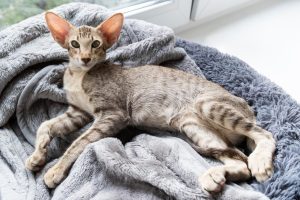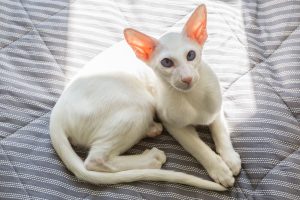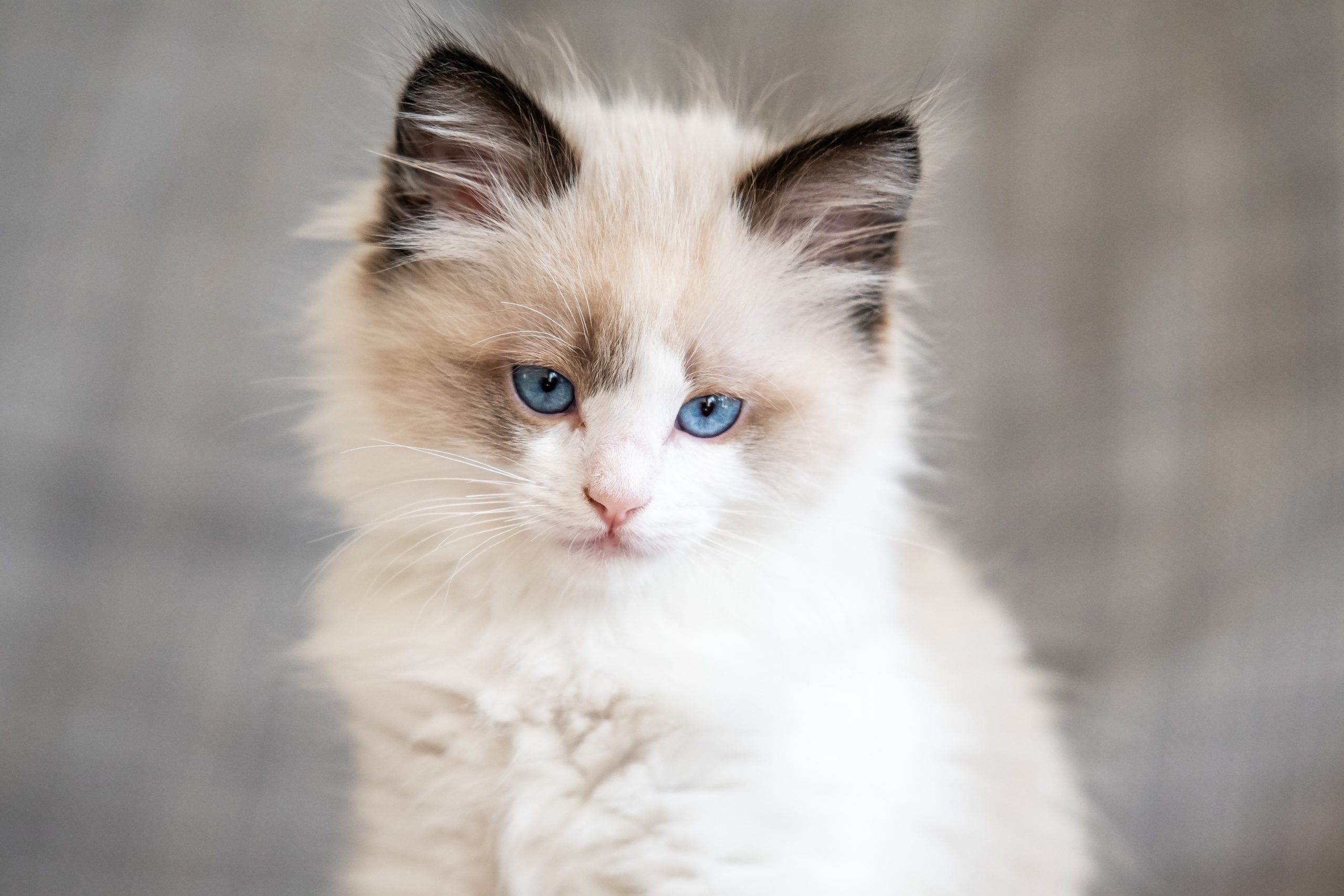The term “Oriental” in the context of cats typically refers to the Oriental Shorthair and Oriental Longhair breeds. These breeds are closely related to the Siamese breed and are known for their sleek and slender bodies, large ears, and striking almond-shaped eyes. Here’s more information about Oriental cats:

oriental
- Physical Appearance:
- Oriental Shorthair: These cats have a short, fine coat that comes in a wide variety of colors and patterns. Their coat is known for its vibrant and vivid colors.
- Oriental Longhair: Similar to the Oriental Shorthair, but with a longer coat, which can also come in various colors and patterns.
- Temperament: Oriental cats are known for their active, playful, and social nature. They are highly intelligent and enjoy mental stimulation through interactive toys and games. They are also affectionate and enjoy being with their human family members.
- Vocalization: Like Siamese cats, Orientals are known for their vocal nature. They are not shy about expressing their opinions and often use their voices to communicate with their owners.
- Health Considerations: Oriental cats are generally healthy but can be prone to some health issues common to the Siamese breed, such as dental problems and certain respiratory conditions. Regular veterinary check-ups are important.
- Origin: Orientals share their origin with Siamese cats, originating in Southeast Asia. They were developed through selective breeding to expand the color and pattern variations beyond those found in Siamese cats.
Popularity: Orientals are appreciated for their striking appearance and lively personalities. They have a dedicated following among cat enthusiasts.
- Grooming: The grooming needs of Oriental cats depend on the length of their coat. Short-haired Orientals require minimal grooming, while long-haired ones may benefit from regular brushing to prevent matting.
- Indoor Living: Orientals are well-suited for indoor living, as they enjoy being around people and can be prone to certain health risks when outdoors. They thrive in homes where they receive attention and playtime.
- Adoption: Consider adopting an Oriental cat from a reputable breeder or rescue organization. While they are less common in shelters than domestic cats, Orientals do occasionally become available for adoption, providing a loving home to a cat in need.
Oriental cats are known for their vibrant personalities and striking appearance. They make wonderful companions for individuals and families who appreciate their active and social nature. When acquiring an Oriental cat, choose a responsible breeder or consider adopting from a reputable source that prioritizes the welfare of their cats.

oriental
oriental shorthair
The Oriental Shorthair is a distinct and elegant breed of cat known for its striking appearance and vibrant personality. Here are some key characteristics and information about Oriental Shorthair cats:
- Physical Appearance: Oriental Shorthairs are known for their sleek and slender bodies. They have a short, fine coat that comes in a wide variety of colors and patterns, similar to the Siamese breed. Their coat is known for its vibrant and vivid colors.
- Head and Ears: They have a wedge-shaped head with a long, straight nose, and large, almond-shaped eyes that can be blue, green, or even a combination of both. Their ears are large, pointed, and set at an angle, adding to their elegant appearance.
- Temperament: Oriental Shorthairs are highly intelligent, active, and social cats. They are known for their playful and affectionate nature. They enjoy interactive play and mental stimulation, such as puzzle toys and games.
- Vocalization: Like their Siamese relatives, Oriental Shorthairs are quite vocal and expressive. They are not shy about using their voices to communicate with their owners and are known for their melodic and chatty meows.
- Health Considerations: Oriental Shorthairs are generally healthy cats, but they can be prone to some health issues common to Siamese breeds, such as dental problems and certain respiratory conditions. Regular veterinary check-ups are important.
- Origin: Oriental Shorthairs share their origins with Siamese cats, originating in Southeast Asia. They were developed through selective breeding to expand the color and pattern variations beyond those found in Siamese cats.
- Popularity: Oriental Shorthairs are appreciated for their striking appearance and lively personalities. They have a dedicated following among cat enthusiasts.
- Grooming: The grooming needs of Oriental Shorthairs are relatively low due to their short coat. Regular brushing can help keep their coat healthy and reduce shedding.
- Indoor Living: Oriental Shorthairs are well-suited for indoor living, as they enjoy being around people and can be prone to certain health risks when outdoors. They thrive in homes where they receive attention and playtime.
- Adoption: Consider adopting an Oriental Shorthair from a reputable breeder or rescue organization. While they are less common in shelters than domestic cats, Orientals do occasionally become available for adoption, providing a loving home to a cat in need.
Oriental Shorthair cats make wonderful companions for individuals and families who appreciate their active and social nature. When acquiring an Oriental Shorthair, choose a responsible breeder or consider adopting from a reputable source that prioritizes the welfare of their cats.
oriental cat
The term “Orientall cat” typically refers to a group of cat breeds that share certain physical characteristics and ancestry. These breeds include the Oriental Shorthair, Oriental Longhair, and various color-pointed breeds, such as the Siamese and Balinese. Here are some key characteristics and information about Oriental cats in general:
- Physical Appearance:
- Sleek and Slender: Oriental cats have sleek, slender, and elegant bodies. They are known for their long, graceful legs.
- Coat Types: Depending on the specific breed, Oriental cats can have either short or long hair. The coat can come in a wide variety of colors and patterns.
- Ears: They have large, pointed ears that add to their striking appearance.
- Eyes: Their almond-shaped eyes are typically large and expressive. Eye color can vary but often includes shades of blue, green, or a combination of both.
- Temperament: Oriental cats are known for their active, playful, and social nature. They are highly intelligent and enjoy mental stimulation through interactive toys and games. They are also affectionate and enjoy being around their human family members.
- Vocalization: Orientall cats are renowned for their vocal and chatty nature. They use their voices to communicate with their owners and are known for their melodious and expressive meows.
- Health Considerations: Oriental cats are generally healthy but can be prone to certain health issues common to their breed, such as dental problems and respiratory conditions. Regular veterinary check-ups are essential.
- Origin: Orientall cats share their origins with Siamese cats and were developed through selective breeding to expand color and pattern variations beyond those found in Siamese cats.
- Popularity: Orientall cats are appreciated for their striking appearance and lively personalities. They have a dedicated following among cat enthusiasts.
- Grooming: Grooming needs depend on the specific coat length of the breed. Short-haired Orientals require minimal grooming, while long-haired ones may benefit from regular brushing to prevent matting.
- Indoor Living: Orientall cats are well-suited for indoor living, as they enjoy being around people and can be prone to certain health risks when outdoors. They thrive in homes where they receive attention and playtime.
- Adoption: Consider adopting an Orientall cat from a reputable breeder or rescue organization. While they are less common in shelters than domestic cats, Orientalls do occasionally become available for adoption, providing a loving home to a cat in need.
Orientall cats, whether they are Shorthairs, Longhairs, or part of the color-pointed breeds, make wonderful companions for individuals and families who appreciate their active, social nature and distinctive appearance. When acquiring an Orientall cat, choose a responsible breeder or consider adopting from a reputable source that prioritizes the welfare of their cats.

